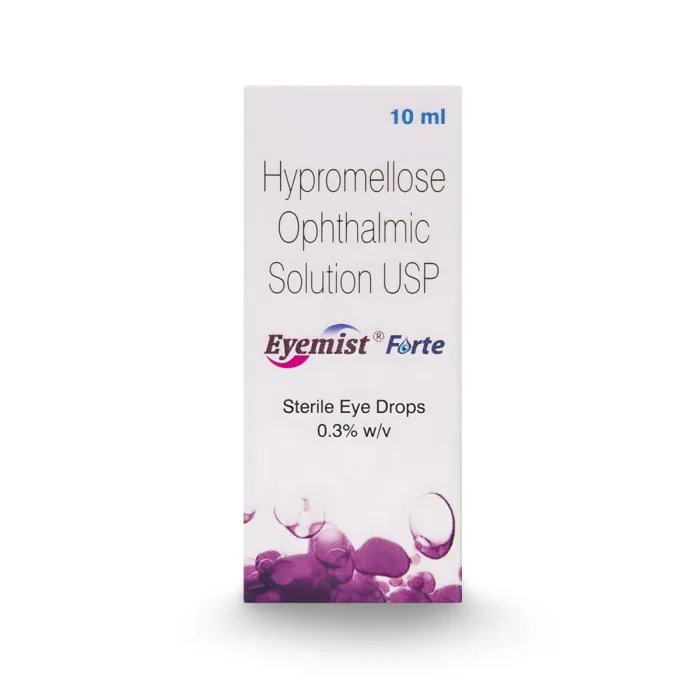Interstitial Keratitis is a rare yet serious eye condition that affects the cornea, which is the clear front part of the eye.
In this condition, the blood vessels grow into the cornea of an individual.
The growth of these blood vessels causes problems in one’s sight since it goes deeper into the cornea, unlike other types of Keratitis.
A person may experience oscular Interstitial Keratitis due to several types of infections.
Since Interstitial Keratitis can threaten one’s vision, learning how to treat the condition is necessary.
This article will discuss the symptoms, causes, and treatments of this Keratitis type in detail.
Symptoms of Interstitial Keratitis
It is important to understand the symptoms of Interstitial Keratitis to get the proper treatment for this condition.
Research states that people with this condition can face decreased vision based on its seriousness.
The other most common symptoms include severe photophobia (sensitivity to light) and eye pain.
Some people may also experience red eyes and excessive tearing of their eyes.
Save up to 90% on your medicine bills

Eyemist Forte 10 ml

Milflox 0.5% 5 ml

Restasis 0.05% Ophthalmic Emulsion

Pred Forte 10 ml
Causes of Interstitial Keratitis
 Source: pixelshot
Source: pixelshotAccording to a study, bacteria or viruses are responsible for 40% of Interstitial Keratitis cases.
In 1% of the cases, Interstitial Keratitis may develop as a result of autoimmune factors.
Congenital Syphilis is one of the most common causes of Interstitial Keratitis and is also known as Syphilitic Interstitial Keratitis.
Some of the other common bacterial causes include Tuberculosis, Leprosy, and Lyme disease.
Viruses like Herpes Simplex and Herpes Zoster may also be responsible for the condition.
Autoimmune diseases like Rheumatoid Arthritis and Sarcoidosis can also cause Interstitial Keratitis.
In some cases, eye injury or surgeries may also result in this condition in some individuals.
Doctors may also suggest Keratitis eye drops as a potential treatment for Interstitial Keratitis.
Sarcoidosis is a rare inflammatory condition that results in abnormal tissue masses in several body parts of a person.
Interstitial Keratitis Treatments
 Source: masterSergeant
Source: masterSergeantThe treatment of Interstitial Keratitis depends on the factors that have resulted in the condition.
Doctors may often suggest antibiotics, antivirals, and anti-inflammatory medications for treating Interstitial Keratitis due to infections and autoimmune factors.
Since the condition may cause inflammation, corticosteroids can help in reducing the swelling.
Individuals may need to undergo a corneal transplant in cases of serious damage to the cornea.
Since it often causes red eyes and excessive tearing, artificial tears can also help soothe the symptoms.
Are you curious to know more about eye infection medications? Read Eye Infection Medicine: Understanding Your Options.
Conclusion
Interstitial Keratitis is a very complex eye condition that can cause blindness if it remains untreated.
This eye condition has symptoms like eye pain, redness, sensitivity to light, sight problems, and excessive tearing.
While bacterial infections like Syphilis, Leprosy, and Tuberculosis cause Interstitial Keratitis, viruses like Herpes Simplex and Herpes Zoster may also be responsible.
Some individuals may experience this condition due to autoimmune factors like Rheumatoid Arthritis and Sarcoidosis.
Doctors usually prescribe antibiotics, antivirals, and anti-inflammatory medications like corticosteroids to treat the condition.
Sometimes, using artificial tear drops may also be beneficial in soothing the symptoms.
Yet, it is always best to consult your doctor before using any medications for Interstitial Keratitis.

Frequently Asked Questions
Are there any home remedies that can treat Interstitial Keratitis symptoms?
No, there are no home remedies that can treat Interstitial Keratitis symptoms. However, certain remedies can help in soothing the symptoms. Cold compresses can help relieve eye pain, while sunglasses can help one deal with their photophobia.
See our Recommendations
Is Interstitial Keratitis infectious?
Yes, if a person experiences Interstitial Keratitis due to certain viral or bacterial infections, it can become infectious. Interstitial Keratitis due to infections like Syphilis and Herpes can be highly contagious in nature.
See our Recommendations
Does Interstitial Keratitis have long-term effects or complications?
Yes, Interstitial Keratitis has long-term effects or complications. Without any treatment, it can cause corneal scarring and vision problems and even result in blindness. If a person is experiencing this condition due to underlying infections, they might have separate effects on one’s body.
See our Recommendations
How is interstitial Keratitis diagnosed?
Doctors usually diagnose Interstitial Keratitis using a combination of different methods. Doctors check one’s medical history, take detailed eye exams, and may also conduct x-rays and scans. Sometimes, they may also take blood tests to find out underlying infections.
See our Recommendations
How can I prevent Interstitial Keratitis?
Since sexually transmitted diseases like Syphilis and genital Herpes can cause Interstitial Keratitis, practicing safe sex can prevent the condition. Vaccination for mumps and other viruses may also help prevent it.
Individuals can also get early treatment of their underlying autoimmune factors to prevent themselves from experiencing Interstitial Keratitis.
See our Recommendations
How long does Interstitial Keratitis last?
Interstitial Keratitis may last depending on its causes and the treatment. While some cases may last for a few weeks with proper treatment, Ocular Interstitial Keratitis due to autoimmune factors may take months to heal.
See our Recommendations
Cheap Medicine Shop only refers to credible, authoritative sources for our content. If you’re curious about how we ensure the integrity of our content, we encourage you to read our Content Information Policy.











